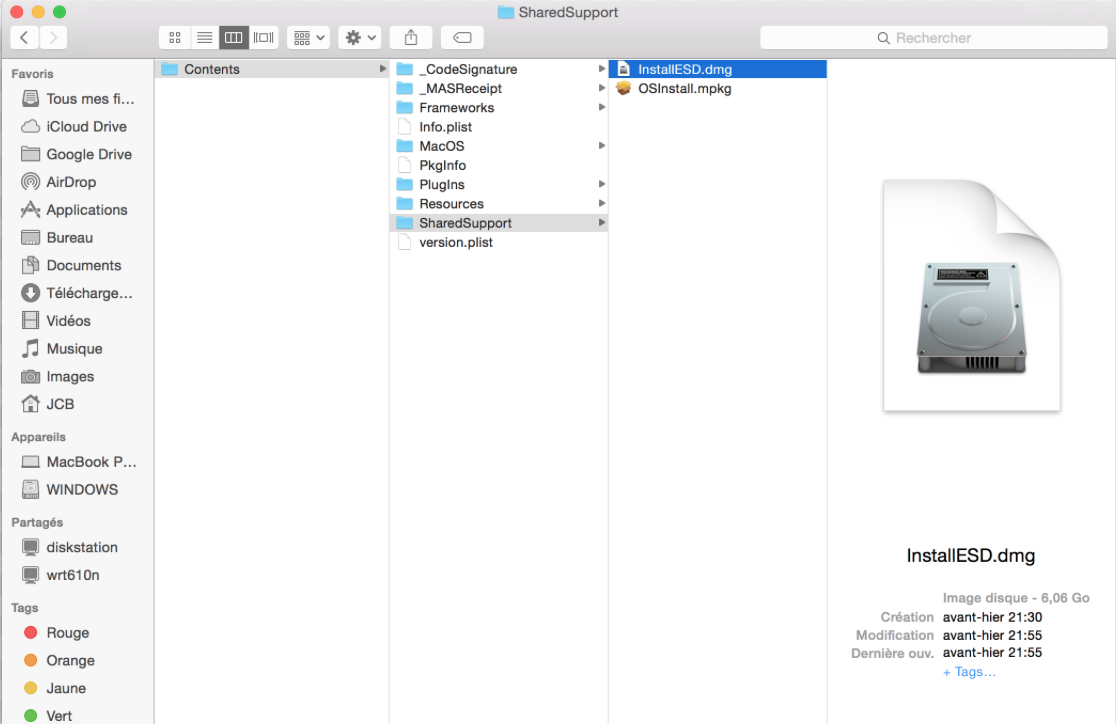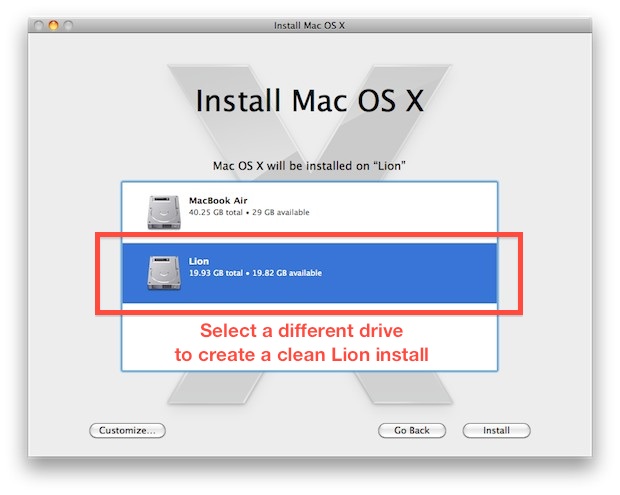- Mac Os X Installer Not Seeing Hard Drive
- Mac Os X Installer Location
- Mac Os X Installer App
- Mac Os X Installer Usb
- Mac Os X Installer Failed
- Mac Os X Installer Package Download
Feb 28, 2014 Every Mac operating system since Lion (OS X 10.7) has included Recovery Mode, a special boot partition that enables you to recover from catastrophic failures and problems. This can be used to install a fresh copy of Mavericks on your hard drive, provided you have Internet access. Choose Reinstall macOS (or Reinstall OS X) from the Utilities window. Click Continue, then follow the onscreen instructions to choose your disk and begin installation. If the installer asks to unlock your disk, enter the password you use to log in to your Mac. After thinking my ElCapitan install was borked for only downloading the 19MB installer, I decided to do a isolation install and clean booted my MacBook Pro with a USB installer of Mountain Lion, Mac OS X 10.8.0 (All I could find laying around). Erased the Internal SSD drive with Disk Utility and Installed Mac OS X 10.8 fresh.
If you want to do a clean install of macOS Sierra, or you have multiple Macs to install it on, then a bootable flash drive for is your best bet for easy installation. Here’s how to make one.
The Easy Option: Disk Creator
The easiest way to create a USB flash installer is with the free program, Disk Creator.
Advertisement
- Download the macOS Sierra installer and Disk Creator.
- Insert an 8GB (or larger) flash drive. If you have any other data on that flash drive, back it up now, because the installer will delete everything on it.
- Open Disc Creator and click the “Select the OS X Installer” button.
- Find the Sierra installer file. This is should be located in your Applications folder.
- Select your flash drive from the drop-down menu.
- Click “Create Installer.”
When it’s done, insert your USB drive into any Mac, then launch the installer by holding down the Option key when you boot up your computer.
The DIY Option: Terminal
If you don’t want to download an extra bit of software, you can make your own installer USB drive using Terminal.
Advertisement
- Download the macOS Sierra installer.
- Insert an 8GB (or larger) flash drive and give it a name. For this tutorial, we’ll use the name
Untitled. Make sure the drive is formatted for OS X Extended (Journaled). If it isn’t, open up Disk Utility and format is so it is. Before you do so, back up any important data on that drive. It’s best to disconnect any other external hard drives or flash drives so you don’t mix them up. - Open up Terminal (Applications > Utilities).
- Type (or copy and paste) this command into Terminal, replacing
Untitledwith the name of your drive, then press Enter:sudo /Applications/Install macOS Sierra.app/Contents/Resources/createinstallmedia --volume /Volumes/Untitled --applicationpath /Applications/Install macOS Sierra.app --nointeraction &&say Done - Type in your password when prompted and press Enter.
- Let the command line do its work and don’t interrupt it until you see the final line that says
Done. This can take a while, so be patient.

Advertisement
When it’s done, insert your USB drive into any Mac, then launch the installer by holding down the Option key when you boot up your computer.
- Joined
- May 12, 2013
- Messages
- 21
- Mac
- Classic Mac
- Mobile Phone
Seeing no real solutions offered here on the forums, other then seeing users getting pushed to look at the troubleshooting guide for UniBeast 8 and then coming back empty handed because they are stuck at:
The fine install guide tells you in step 1:
Mac Os X Installer Not Seeing Hard Drive
The full operating system is a free download for anyone who has purchased Mac OS X Snow Leopard, Lion, or Mountain Lion or has a Mac preloaded with OS X Mavericks, Yosemite, El Capitan, or macOS Sierra. Download the Application from the Mac App Store using your Apple ID on any Mac or functional computer running OS X 10.7.5 or later.
1. Open Mac App Store
2. Log in with your Apple ID
3. Download macOS High Sierra
The Application Install macOS High Sierra will appear in /Applications.
 Then you start UniBeast and it says 'Selected Mac OS X Installer is incomplete'.
Then you start UniBeast and it says 'Selected Mac OS X Installer is incomplete'.If this is you then you can fix this by doing the following:
You will need to recreate the full installer from the separate parts.
To do so we will use the installer stub app to grab all the files from Apple and then abort the install before it does anything else.
Run the 19MB stub installer (/Applications/Install macOS High Sierra).
Choose the install disk and click ‘install’ (it won’t actually install yet!).
It will download the remaining install files and place them under /macOS Install Data (i.e. look for the folder in the root of your hard drive ‘Macintosh HD’).
When it has finished downloading all it needs, the installer screen will then ask you to restart the Mac – but don’t! At this point ABORT the install by quitting the installer app.
Next we will recreate the full installer from all the downloaded parts. This will restore the ability to create an install media USB.
Do the following:
Open Terminal and run: sudo -s
Enter admin credentials to gain root permissions.
Then copy and paste the following 3 commands:
mkdir /Applications/Install macOS High Sierra.app/Contents/SharedSupport
cd /macOS Install Data
Mac Os X Installer Location

Mac Os X Installer App
find . -mount | cpio -pvdm /Applications/Install macOS High Sierra.app/Contents/SharedSupportMac Os X Installer Usb
You now have a full installer package in your Applications folder!
Mac Os X Installer Failed
Now goto STEP 2: Create a Bootable USB Drive with UniBeast